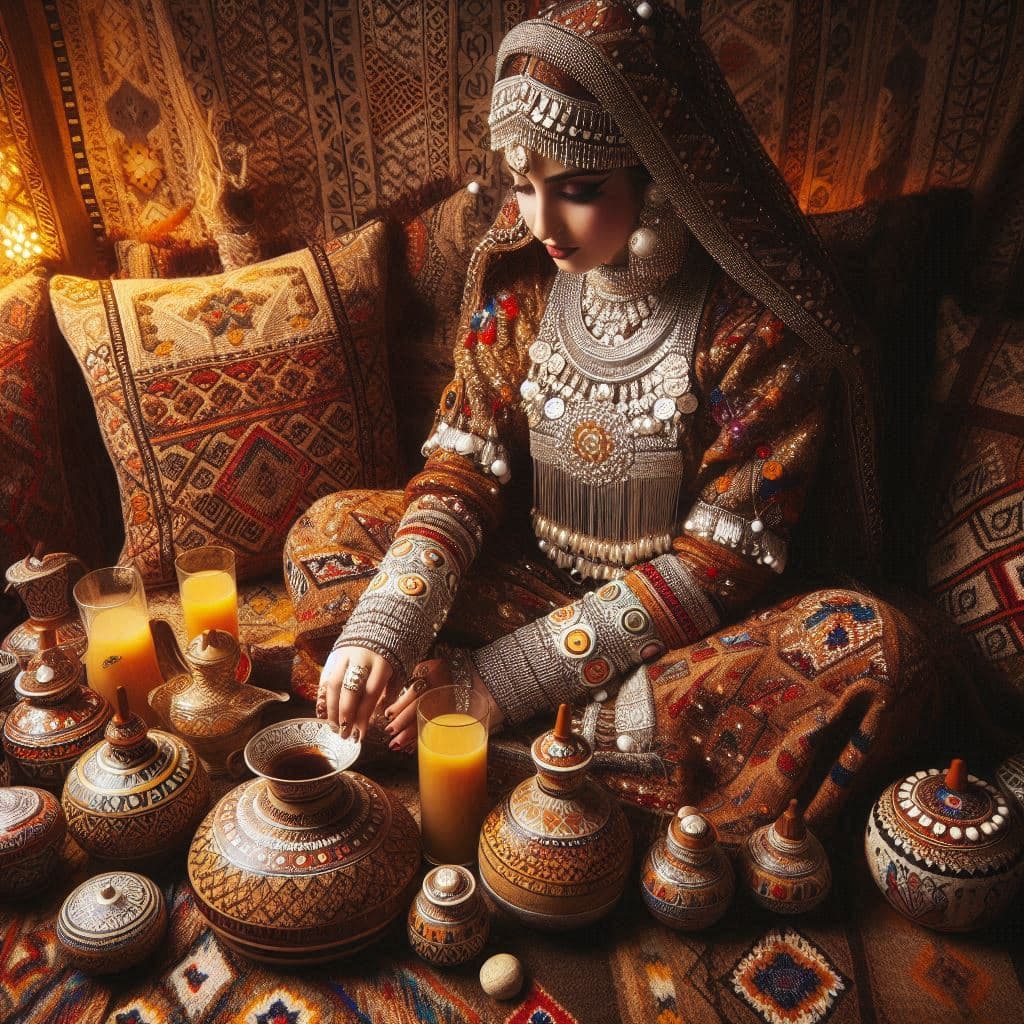
Traditional Pashto Attire and Its Cultural Significance

Hasan Tariq
04 Apr 2022 - 03 Mins read
Traditional Pashto attire is a vibrant reflection of the Pashtun people's cultural heritage and identity. The clothing styles, fabrics, and accessories are deeply rooted in the region's history, climate, and way of life, showcasing the unique aesthetic values of the Pashtun community.
The Men’s Attire
The traditional dress for Pashtun men is the Kameez Shalwar, a long tunic paired with loose-fitting trousers. It is often accompanied by a Chapan, a long, colorful coat worn over the Kameez, especially during the colder months. The Peshawari Chappal, a distinctive leather sandal, is a popular choice of footwear, known for its durability and comfort.
A key accessory for men is the Pakol or Patkai, a soft, round-topped hat made of wool, which provides warmth and is often seen in the mountainous regions of Afghanistan and Pakistan. In certain areas, the Lungee, a type of turban, is also worn as a symbol of honor and tradition.
The Women’s Attire
Pashtun women’s attire is characterized by its vibrant colors, intricate embroidery, and beautiful patterns. The traditional dress, known as the Firaq Partug, consists of a long, pleated frock (Firaq) and baggy trousers (Partug). These dresses are often adorned with elaborate embroidery and mirror work, reflecting the wearer’s social status and the occasion.
Women also wear the Shawl or Dupatta, a long scarf draped over the shoulders or head, adding elegance and modesty to the outfit. In rural areas, women may wear a Burqa or Chador for additional coverage when outside the home, following cultural and religious customs.
Cultural Significance and Symbolism
Traditional Pashto attire is more than just clothing; it holds cultural and symbolic significance. The choice of colors, patterns, and accessories can indicate a person's social status, marital status, and even regional identity. For example, darker colors are typically worn during mourning periods, while brighter hues are reserved for celebrations and festivals.
The embroidery patterns on women's dresses are often unique to specific tribes or regions, serving as a visual identifier of one's heritage. This rich symbolism ensures that traditional Pashto attire remains a vital part of the community's cultural expression and identity.
Modern Influences and Adaptations
In recent years, traditional Pashto attire has seen a fusion with modern styles. Designers are experimenting with contemporary cuts and fabrics while preserving traditional elements such as embroidery and motifs. This blend of old and new has made Pashto fashion popular among younger generations and has attracted attention on global fashion platforms.
The Peshawari Chappal has even made its way into mainstream fashion, with celebrities and fashion icons embracing its unique design. Similarly, modern interpretations of the Kameez Shalwar have become a staple in both formal and casual wear, not just in Pashtun regions but across South Asia.
Preserving the Heritage
Despite the influence of modern fashion, there is a strong movement within the Pashtun community to preserve their traditional attire. Efforts are being made to document and revive old embroidery techniques, patterns, and styles that are at risk of being forgotten. This has led to a resurgence of interest in traditional crafts, providing employment and supporting local artisans.
"Our traditional attire is a tapestry of our history, a reflection of our pride, and a testament to the artistry of our people."
Shahzada Gul
The Future of Pashto Attire
The future of Pashto attire lies in striking a balance between tradition and modernity. As designers continue to innovate and adapt traditional clothing to contemporary tastes, the essence of Pashtun culture remains strong. The evolving fashion scene ensures that traditional Pashto attire remains relevant and celebrated in a rapidly changing world.
Pashto attire is not merely a relic of the past but a living, evolving symbol of cultural pride. It tells the story of a resilient people who, despite the passage of time, continue to cherish and celebrate their heritage.
Whether worn in everyday life or at special occasions, traditional Pashto clothing will always hold a special place in the hearts of the Pashtun people, serving as a reminder of their rich cultural legacy and enduring spirit.



